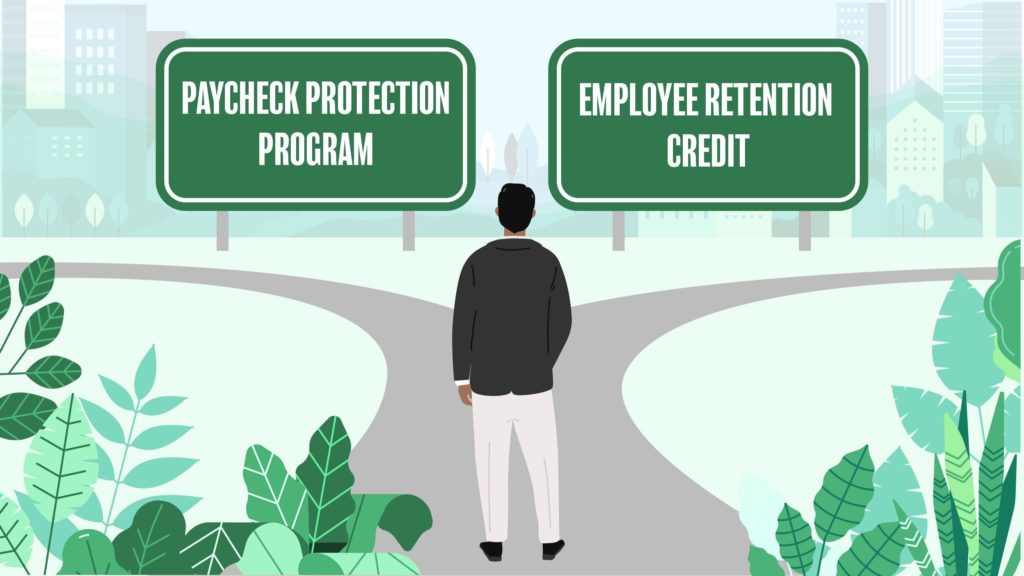Employee Retention Credit
The Employee Retention Credit (“ERC”) provides a wide variety of employers with lucrative refundable payroll tax credits for qualified wages paid to employees in 2021. Businesses can still apply for the ERC by filing an amended Form 941X (Quarterly Federal Payroll Tax Return). These are for the quarters during which the company was an Eligible Employer. Want to sign up or see if you are eligible for ERC? Then keep on reading!
[elfsight_popup id=”2″]
The CARES Act
ERC is a stimulus program designed to help those businesses that were able to retain employees during the Covid-19 pandemic. It was established by the CARES Act and it it is refundable tax credit, a grant that you claim for your business. It is NOT a loan. The ERC is available to both businesses and non-profits. It’s a refund of past salaries and heath care costs paid to your employees during 2020 and 2021.
Businesses can earn up to $26,000 per employee. Click the link and register today!
What Is ERC?
The federal government established the Employee Retention Credit (ERC). It provides a refundable employment tax credit to help businesses with the cost of keeping staff employed.
ERC is a stimulus program designed to help businesses that were able to retain their employees during the Covid-19 pandemic. It was created by the CARES Act, and it is a refundable tax credit that you can claim for your business. Keep in mind that it is not a loan. The ERC is available to both small and mid-sized businesses. Additionally, it is based on qualified wages and healthcare paid to employees.
Reminder: If you filed Form 941-X to claim the Employee Retention Credit, you must reduce your deduction for wages by the amount of the credit, and you may need to amend your income tax return (e.g., Forms 1040, 1065, 1120, etc.) to reflect that reduced deduction.

Who Qualifies For The Employee Retention Credit?
Businesses that have experienced partial shutdowns due to government orders are eligible. Additionally, to qualify, your business must have been negatively impacted in one of the following ways:
- A government authority required partial or full shutdown of your business during 2020 or 2021. This includes your business operations limited by commerce, inability to travel or restrictions of group meetings.
- Gross receipt reduction criteria is different for 2020 and 2021. It is measured against the current quarter as compared to 2019 pre-COVID amounts.
- A business can be eligible for one quarter and not another.
- Initially, under the CARES Act of 2020, businesses were not able to qualify for the ERC if they had already received a Paycheck Protection Program (PPP) loan. With new legislation in 2021, employers are now eligible for both programs. The ERC, though, cannot apply to the same wages as the ones for PPP.
Want to see if you qualify for the ERC? The Jackie Jackson has made it as easy as 1-2-3. Just click the button below to get started!
What Is An ERC Calculation?
The ERC calculation is based on total qualified wages, including health plan expenses paid by the employer to the employee. The ERC equals 50 percent of the qualified wages for 2020 and 70% for 2021. The maximum credit amount is for 2021, with a cap of $10,000 in a quarter.
Do Businesses Still Qualify If They Already took the PPP?
Yes. Under the Consolidated Appropriations Act, businesses can now qualify for the ERC even if they already received a PPP loan. However, the ERC will only apply to wages not used for the PPP.

May an Eligible Employer reduce its federal employment tax deposit by the qualified wages that it has paid without incurring a failure to deposit penalty?
Yes. An Eligible Employer that pays qualified wages in a calendar quarter will not be subject to a penalty under section 6656 of the Internal Revenue Code (the “Code”) for failing to deposit federal employment taxes if:
- the Eligible Employer paid qualified wages to its employees in the calendar quarter before the required deposit,
- the total amount of federal employment taxes that the Eligible Employer does not timely deposit, reduced by (a) any amount of the employer’s share of social security tax deferred under section 2302 of the CARES Act, and (b) any amount of federal employment taxes not deposited in anticipation of the credits claimed for paid sick and/or family leave under the FFCRA, is less than or equal to the amount of the Eligible Employer’s anticipated Employee Retention Credit for the qualified wages for the calendar quarter as of the time of the required deposit, and
- the Eligible Employer did not seek payment of an advance credit by filing Form 7200, Advance Payment of Employer Credits Due to COVID-19, with respect to any portion of the anticipated credits it relied upon to reduce its deposits.
Can An Eligible Employer Receive An Advance Of The Employee Retention Credit?
Can an Eligible Employer receive an advance of the Employee Retention Credit to fund the payment of qualified wages if the Eligible Employer does not have sufficient federal employment taxes set aside for deposit to cover those payments?
Yes. Because quarterly employment tax returns are not filed until after qualified wages are paid, some Eligible Employers may not have sufficient federal employment taxes set aside for deposit to the IRS to fund their qualified wages through reduction of the amount to be deposited, particularly after taking into account the permitted deferral of the employer’s share of social security tax under section 2302 of the CARES Act. Accordingly, the IRS has a procedure for obtaining an advance of the refundable credits.
The Eligible Employers
The Eligible Employer is permitted to defer the deposit and payment of the employer’s share of social security tax under section 2302 of the CARES Act and may do so prior to reducing any deposits in anticipation of the credit. See Deferral of employment tax deposits and payments through December 31, 2020. If the remaining employment tax deposits set aside, after taking into account any deferral of the employer’s share of social security tax and any permitted reduction in employment tax deposits in anticipation of the FFCRA paid leave credits, are less than the qualified wages, the Eligible Employer can file a Form 7200, Advance Payment of Employer Credits Due to COVID-19, to claim an advance credit for the remaining qualified wages it has paid for which it did not have sufficient federal employment tax deposits.
When an Eligible Employer fully reduces its required deposits of federal employment taxes otherwise due on wages paid in the same calendar quarter to its employees in anticipation of receiving the credits, and it has not paid qualified wages in excess of this amount, it should not file a Form 7200. If it files a Form 7200, it will need to reconcile this advance credit and its deposits with the qualified wages on Form 941, Employer’s Quarterly Federal Tax Return (or other applicable federal employment tax return such as Form 944 or Form CT-1), beginning with the Form 941 for the second quarter, and it may have an underpayment of federal employment taxes for the quarter.

Impact Of Other Credit And Relief Provisions
An eligible employer’s ability to claim the Employee Retention Credit is impacted by other credit and relief provisions as follows:
- If an employer receives a Small Business Interruption Loan under the Paycheck Protection Program, authorized under the CARES Act, then the employer is not eligible for the Employee Retention Credit.
- Wages for this credit do not include wages for which the employer received a tax credit for paid sick and family leave under the Families First Coronavirus Response Act.
- Wages counted for this credit can’t be counted for the credit for paid family and medical leave under section 45S of the Internal Revenue Code.
- Employees are not counted for this credit if the employer is allowed a Work Opportunity Tax Credit under section 51 of the Internal Revenue Code for the employee.
Claiming The Credit
In order to claim the new Employee Retention Credit, eligible employers will report their total qualified wages and the related health insurance costs for each quarter on their quarterly employment tax returns, which will be Form 941 for most employers, beginning with the second quarter. The credit is taken against the employer’s share of Social Security tax but the excess is refundable under normal procedures.
In anticipation of claiming the credit, employers can retain a corresponding amount of the employment taxes that otherwise would have been deposited. This includes federal income tax withholding, the employees’ share of Social Security and Medicare taxes, and the employer’s share of Social Security and Medicare taxes for all employees, up to the amount of the credit, without penalty, taking into account any reduction for deposits in anticipation of the paid sick and family leave credit.
Grab the Opportunity Now, While You Still Can!
The Jackie Jackson has made this opportunity even easier for you. Partnering up with Bottom Line Concepts, you can get money from the government by just applying thanks to the help of our CARES Act. Click the button, fill out the form and get started. The Jackie Jackson is all about giving back to you and the rest of her community.

Do You Want More?
Still want to learn more about Employee Retention Credit? No worries stay tuned for our ERC Article Part Two. The Jackie Jackson has lessons on Employee Retention Credit and so much more coming up in the next few weeks. So keep your eyes peeled and your mind open.
Jackie is a Real Estate Coach and Full-time Real Estate Investor. She boldly teaches new and seasoned investors how to Reprogram their thinking and re Write their money story. So they can also easily and effortlessly experience the confidence they need to max-out their money-making potential without fear, guilt or shame while investing in real estate.
Jackie helps investors at all levels create profits and increased cash flow through Tax Deeds & Tax Liens Real Estate Investing. Jackie is the CEO and founder of Tax Deed Genius, the #1 Step by Step National Tax Liens & Tax Deeds, Surplus Overages Training Course for New and Seasoned Real Estate Investors. Learn how to buy properties for pennies on the dollar at deep discounts from local county public auctions.






